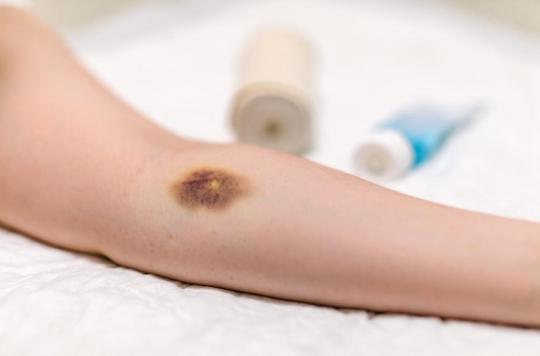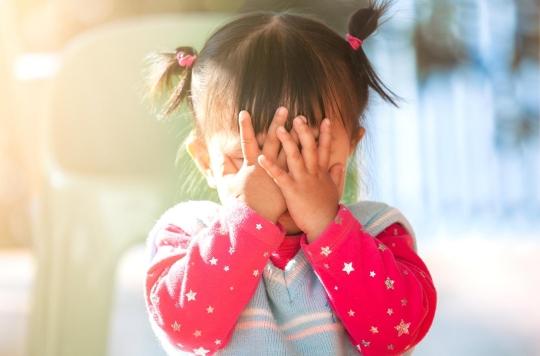American researchers have just developed a new clinical tool for screening bruises in infants and young children in order to identify cases of child abuse.

- Called TEN-4-FACESp, this clinical tool identifies potential cases of abuse in infants and children under 4 based on the areas of the body where bruises are found.
- Coming soon as an app, the tool has a sensitivity of 95% and was able to distinguish potential abuse from non-abuse cases with 87% reliability.
How to distinguish a bruise as a simple “bobo” in a toddler from a bruise which characterizes a clear case of child abuse?
Among health and early childhood professionals, recognizing cases of abuse in an infant or very young child is not always easy. A new clinical tool developed by American researchers could help them. Called TEN-4-FACESp, it precisely specifies areas of the body where bruising is likely due to abuse in infants and young children. The results of the study have just been published in the journal JAMA Network Open.
“A bruise on a young child is often thought of as a minor injury, but depending on where it appears, it can be an early sign of child abuse,” says Mary Clyde Pierce, pediatric emergency physician and director of research for the Division of Pediatrics of Child Abuse at Ann & Robert H. Lurie Children’s Hospital in Chicago. We have to consider bruising in terms of risk. Our new screening tool helps clinicians identify high-risk cases that warrant an assessment for child maltreatment. This is critical, as abuse tends to get worse and earlier recognition can save children’s lives.”
95% sensitivity
The screening tool reliably flags a high risk of abuse in areas where the blues appear: the torso, ears, and neck, as well as in certain areas of the face: the frenulum (the skin between the upper lip and gums, and under the tongue), angle of the jaw, cheeks, eyelids and subconjunctivitis (red bruise on the white part of the eye). The “p” in TEN-4-FACESp stands for patterned bruises, when, for example, bite marks or the shape of the hand are visible on the child’s skin. Finally, the “4” represents any bruise, regardless of where a child 4 months or younger is. The researchers point out that this rule only applies to children with bruises and under the age of 4.
To test this new tool, researchers screened more than 21,000 children under the age of 4 for bruising in five pediatric emergency departments. They recruited 2,161 patients with bruises. The researchers found that the TEN-4-FACESp screening tool had a sensitivity of 95% and a specificity of 87%, meaning it distinguished potential abuse from non-abuse with a high level of accuracy.
“It was very important for us to ensure that the screening tool could identify potential cases of child abuse without overestimating innocent cases of children with bruises caused by accidental or incidental injury, insists Dr. Pierce. We are delighted that this tool has proven to be very reliable and is simple enough to apply in any clinical encounter. A skin examination in infants and young children is essential.”
An app coming soon
Next objective: to develop a TEN-4-FACESp application, the launch of which is scheduled for October. It will present a rotating 3D image of the child’s body. When a clinician clicks on an area of a patient’s bruise, a summary of the study results will appear, allowing the clinician’s patient to be compared with the actual data from this large-scale study. The goal is to help the user decide if the bruise is a sign of abuse.
.
















